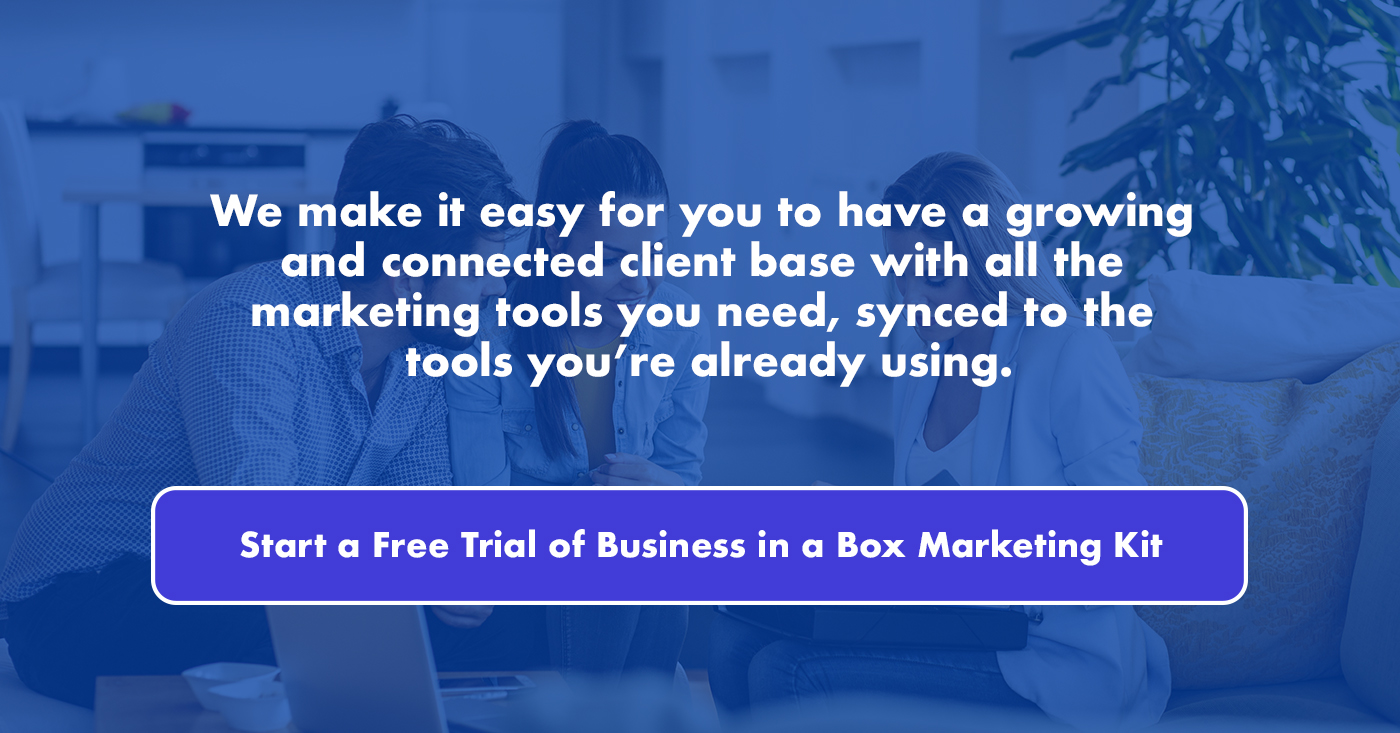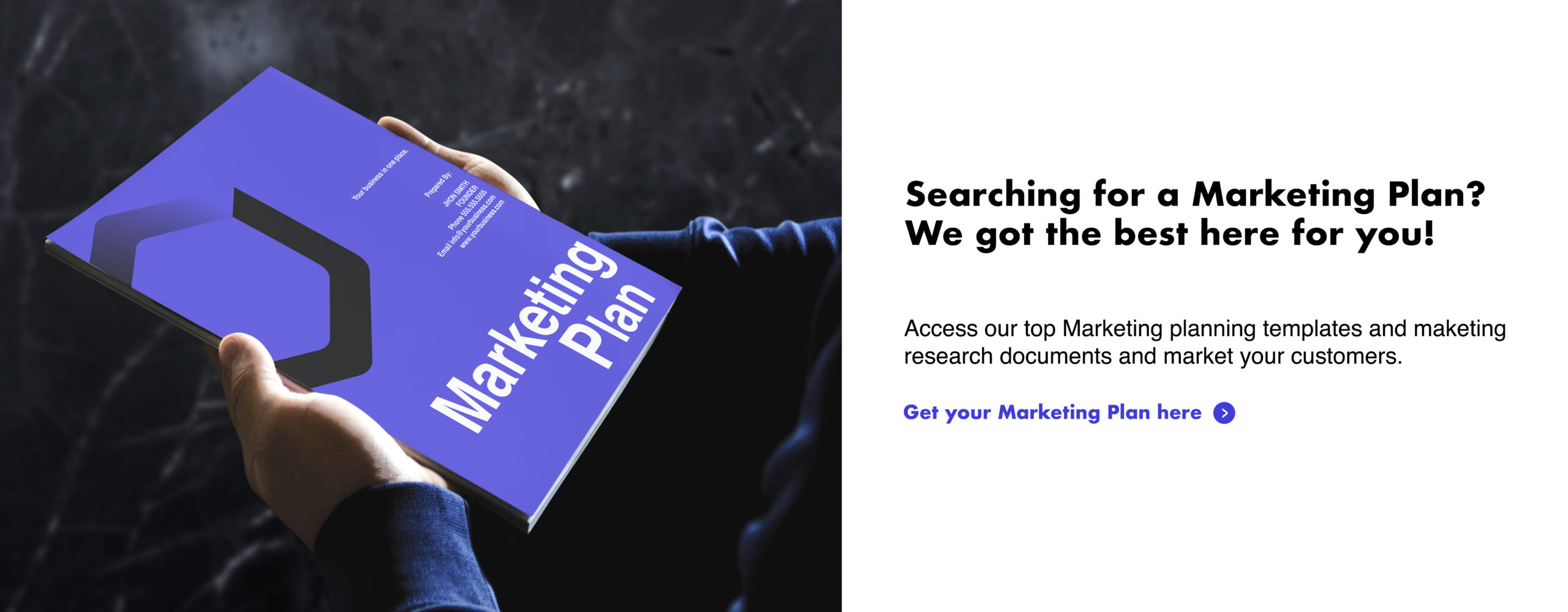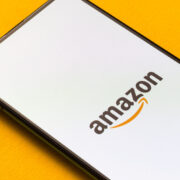
How can you use automation in your eCommerce business?
This guide will show you 7 areas of your business that you can automate — to get results like recovering $30,000 in lost sales.
Most importantly, you’ll get 18 automation recipes that you can import and use right away — in just a few clicks — to automate each of these 7 areas of your eCommerce business.
- Recover revenue with abandoned cart emails and automation
- Use segmentation to make more sales
- Win-back campaigns that keep customers coming back
- Show your products in emails or through automation
- Reward your loyal customers with discounts and special offers
- Nurture leads and builds strong customer loyalty with lead scoring and emails
- Send automated eCommerce to upsell and cross-sell campaigns to your customers
1. Recover revenue with abandoned cart emails and automation
Over 75% of people abandon their shopping carts online. In your eCommerce store, that means that 3 out of every 4 people who add something to their cart leave without completing a purchase.
Abandoned carts mean lost revenue. (This free abandoned cart calculator shows you how much-abandoned carts cost you — and how much money you could recover by adding an abandoned cart email.)
 If 6,000 shoppers come to your site each month, your average product costs $20, and you see an average conversion rate of 2.4%, you’re probably losing over $11k per month on abandoned carts.
If 6,000 shoppers come to your site each month, your average product costs $20, and you see an average conversion rate of 2.4%, you’re probably losing over $11k per month on abandoned carts.
If your checkout is top-notch and you don’t think your customers are confused, it’s time to bring in reinforcements: Abandoned cart emails and automation!
How does abandoned cart email automation work?
Abandoned cart automation lets you automatically reach out to contacts who abandon their carts. These abandoned cart reminders help you bring shoppers back to your site — and convert them to customers.
If it’s a shopper’s first time abandoning their cart, you can even offer them a special deal to recover the cart. This creates an opportunity to convert first-time shoppers to customers.
 Convert first-time shoppers to customers with this automation. Offer first-time cart abandoners a special deal to complete their purchase.
Convert first-time shoppers to customers with this automation. Offer first-time cart abandoners a special deal to complete their purchase.
Marketing automation makes it easy to set up abandoned cart emails — and once you set them up, they work in the background. You can set it and forget it. And while the average eCommerce email open rate is around 15%, abandoned cart emails have a nearly 45% open rate, making them one of the most effective eCommerce marketing automation you can use.
Plus, 21% of all cart abandonment emails are clicked, and 50% of those clicks lead to a recovered purchase back on site.
Need an Administration all-documents-inclusive kit? Find it here.
Abandoned cart email best practices
Use your abandoned cart emails to remind people why they put your product in their cart in the first place. What makes your product awesome? What benefits or value can you highlight in your abandoned cart email content?
A series of 2 or 3 abandoned cart emails can work better than just 1. Morrow Audio sends a series of 2 abandoned cart emails to shoppers. The results?
- A 26% conversion rate (almost 3x the average)
- Recovered $30,000(!) via an automated series of 2 abandoned cart emails
Use your emails to let customers know that a certain item is low in stock or to trigger some FOMO (fear of missing out). People care more about what they might lose than about what they will gain. This is called loss aversion: the psychological phenomenon in which people prefer avoiding losses to acquiring gains.
 Recover abandoned carts on Black Friday (or any time) with this automation. When a customer abandons their cart, automatically enter them into an abandoned cart email series.
Recover abandoned carts on Black Friday (or any time) with this automation. When a customer abandons their cart, automatically enter them into an abandoned cart email series.
Here are 5 more tips for creating abandoned cart emails that bring customers back:
- Build a well-crafted subject line: 64% of people decide if they will open an email based on the subject line
- Give a clear call-to-action (CTA): Avoid words like “buy” or “pay” in your abandoned cart CTAs. These are “high-friction” words. A gentler CTA like “return to your cart” gets people to take the next step (clicking) before the sale.
- Show off your product: People might not remember what products had them clicking the “add to cart” button. Use product photos to showcase exactly what your customer left in their cart.
- Use social proof: 91% of people read online reviews. In your abandoned cart email, highlight positive reviews of the product that your contact left in their cart.
- Optimize for mobile: 61% of all emails are opened and read on mobile devices.
With marketing automation and these abandoned cart email best practices, you’ll be well on your way to recovering lost revenue for your eCommerce store.
2. Use segmentation to make more sales
Segmentation is one of the key ingredients in eCommerce marketing automation. Segmentation means grouping your contacts based on their characteristics or the actions they take.
When you segment, you get more sales because you’re offering people products they already want — and you can reach them at the moments they’re most likely to buy.
You can segment your contacts based on almost anything, including:
- Their average order value
- Their location
- The total dollar value of their purchases
- How many orders they’ve placed
- Which items they’ve purchased
- Whether they abandoned their shopping cart
- How long has it’s been since their last order
- Which products do they view more than once on your site
- How many times they’ve visited your online store
- Their loyalty rewards program status
- When they last interacted with your email content
When you target the right people, you get better conversion rates, retain more customers, and see higher revenue.
How does segmentation work in eCommerce marketing automation?
You can segment your contacts with lists, tags, and custom fields.
Lists are a broad form of segmentation and usually indicate a contact’s status: active, customer vs. non-customer, newsletter subscriber, etc. If you have 2 different newsletters that customers can sign up for, you would create 2 different lists and segment your contacts accordingly.
A tag indicates contact attributes that are time-sensitive or subject to change; things as product interest, event attendee, or loyalty program member.
A custom field is a specific data point within a contact’s profile. Examples of custom fields are last purchase date, favorite color, Twitter handle, and last email engagement date… pretty much any data point you want to collect about a customer can be stored in a custom field.
Here are a few ways you can use lists, tags, and custom fields in your eCommerce marketing automation:
-
- Automatically start a welcome series when a contact subscribes to a certain list
- Send targeted content to different contacts based on a tag. For example, if a contact is tagged as interested in a certain product, send them an email campaign focused on that product.
- Use custom fields to fill in contact details in your email content. This lets you personalize your emails while still automating your campaigns.
 When a contact subscribes to a list, automatically enter them into a welcome email series with this automation.
When a contact subscribes to a list, automatically enter them into a welcome email series with this automation.
Segmentation plays a big role in nearly every eCommerce marketing automation workflow or campaign. When you send the right message to the right people at the right time, you can make more sales and build customer loyalty.
3. Win-back campaigns that keep customers coming back
A win-back email campaign is a series of targeted, personalized emails you send to customers who haven’t engaged with your content or purchased from your eCommerce store for a while.
The goal of win-back campaigns is to get your contacts to interact with your email content and buy from your online store again. Win-back email campaigns are also called re-engagement email campaigns.
Why do win-back campaigns matter? Why focus on winning back a customer who hasn’t shown interest in your content or products in a while? Win-back campaigns are important for your eCommerce business because it costs 5 times more to get a new customer than to retain a current customer — so re-engaging lapsed customers saves your business money.
How to choose which contacts get a win-back campaign
In addition to saving you money, automating your win-back campaigns saves you time. You don’t have to keep track of when your contacts last bought your product or clicked on your emails — automation can do that for you.
You can use segmentation to target customers based on the last time a contact engaged with your content or visited your online store. This is called engagement tracking. You can also track a customer’s last purchase date with purchase tracking.
 This two-part automation tags your customers when they engage, stay active, or become inactive — so you can track their engagement at scale.
This two-part automation tags your customers when they engage, stay active, or become inactive — so you can track their engagement at scale.
 The second half of the engagement tagging automation recipe tracks your customers’ engagement with your content or store so that they can be tagged accordingly.
The second half of the engagement tagging automation recipe tracks your customers’ engagement with your content or store so that they can be tagged accordingly.
When you use engagement and purchase tracking, you can trigger win-back email automation when a customer hits a certain point of disengagement — like 6 months since their last purchase, or 3 months since they clicked through one of your emails to your site.
How to schedule an automated win-back email campaign
Here’s an example of how to schedule your win-back email campaign for your eCommerce store:
-
- Send your first email about 3 months after your customer’s last interaction. Track their engagement with the email. Do they open the email, click a link, or (hopefully) make a purchase?
- Send your follow-up emails in a drip campaign that’s spread equally between your first and last email — that’s usually an email every 1-2 months
- Send your last email when your customers are historically shown to be completely disengaged. If that point is at 9 months of inactivity, you have 6 months from your first email to win them back. Once they pass the cut-off point, remove them from your email list.

If a contact hasn’t engaged with your content or online store in a while, this automation automatically enters them into a re-engagement email campaign — so you can win back disengaged customers.
4. Show your products in emails or automation
When you only have seconds to make an impression on someone who opens your emails, a visual is a powerful attention pull.
The average email attention span has increased by 7% between 2011 and 2016, but it’s still only (on average) about 11 seconds. How do you get people to click on your email call-to-action before the last *tick* of those 11 seconds?
One big way is to use product images – and use them the right way.
Email campaigns with images have a 42% higher CTR (click-through rate) than campaigns without images.
Numbers don’t lie. And neither do convincing visuals like this one:
 The number of images in different types of email affects the specific click-through rate, but it’s obvious that images are better than no images. (Source: Vero)
The number of images in different types of email affects the specific click-through rate, but it’s obvious that images are better than no images. (Source: Vero)
You can use images to promote your brand and your products to sell people the idea of buying from you.
But it’s not just about making a product visible, it’s about making the right products visible. Make sure you show off the product that you know your customer wants. Ecommerce automation makes it easy to show off your product images.
 This automation uses site tracking to automatically track your contacts’ interest in certain products — then send targeted messaging based on that interest.
This automation uses site tracking to automatically track your contacts’ interest in certain products — then send targeted messaging based on that interest.
How does automation make it easier to use images in your campaigns?
- Product blocks
- Integrations with your eCommerce store
- Tagging
- Segmentation
Product blocks let you share product details and images from your eCommerce store in your marketing emails to help create personalized campaigns.
In an eCommerce platform like Shopify, you can create product collections in your eCommerce store and upload product images directly into campaigns and automations — so you can show people what you know they’re most likely to buy.
If you integrate your eCommerce store with your marketing automation platform, you can use product blocks to add product images and details to your emails. When you segment your audience based on their product interests, product blocks help you show your customers the products you know they want to see.
Here’s what the content from a product block can look like in your email:
 This is what your email content looks like when you use product blocks to upload product images and details.
This is what your email content looks like when you use product blocks to upload product images and details.
The product block function in this email pulled the following information from the eCommerce store:
-
- Product images
- Product pricing
 When a contact shows interest in purchase on your Shopify store, automatically send them an email with a coupon for that product — and product blocks to remind the shopper how great your product is.
When a contact shows interest in purchase on your Shopify store, automatically send them an email with a coupon for that product — and product blocks to remind the shopper how great your product is.
An infographic created by MDG Advertising shows how much a product image can impact a customer’s buying decision:
 67% of consumers say that the quality of a product image is “very important” in selecting and purchasing the product. (Source: MDG Advertising)
67% of consumers say that the quality of a product image is “very important” in selecting and purchasing the product. (Source: MDG Advertising)
Product blocks help you pull those influential product images into your emails. Combined with tags to indicate product category interest, you can create more specific product emails for the right contacts that result in more opens, clicks, and buys.
4. Reward your loyal customers with discounts and special offers
Ecommerce automation is one of the easiest and most efficient ways to get to know your customers — without taking your time and focusing away from other things that need your attention.
Why is it important to get to know your customers? Because when you do, you can see which ones are most engaged — and reward them for it.
Your best customers are the people most likely to buy from you again and again. Segment your contacts based on repeat purchases, average order value, and total dollars spent to build a loyalty program and share special offers.
 Building customer loyalty means building up your business revenue too. And they get discounts. Win-win!
Building customer loyalty means building up your business revenue too. And they get discounts. Win-win!
A loyalty program is a reward for your loyal online shoppers. It can be:
- A discount percentage off their total purchase
- Free shipping
- BOGO promotion (buy one, get one free)
- A free gift
- A dollar amount off
- Membership into a VIP program
- Contest entry
Ultimately, a loyalty program is a way to show your customers you care and want to provide great service.
And did you know that, on average, coupon users spend 24% more than regular shoppers? Giving customer discounts doesn’t mean giving away revenue — it means getting even more revenue funneled back into your business.
Not only are special offers good for your revenue, but they’re excellent for customer acquisition and retention:
- 68% of customers say coupons generate loyalty
- 82% of people are more likely to continue using a retailer that offers consistent deals
- 57% of consumers join loyalty programs to save money
To decide who and when to send special offers to your customers, you can use eCommerce automation.
 This automation lets you, segment members of your customer loyalty program, into tiers based on a point-based score — then send them rewards and discounts accordingly.
This automation lets you, segment members of your customer loyalty program, into tiers based on a point-based score — then send them rewards and discounts accordingly.
You can create automations to tag and segment customers, then send them special offers:
- When they first subscribe to a list, send them a discount on their first purchase
- Celebrate a customer milestone with a celebratory offer
- When they reach a certain number of purchases, thank them with a discount code
- If they haven’t purchased in a while, send them a win-back email coupon
 Automatically keep track of a customer’s first purchase date with this automation. This helps you segment your contacts and better understand your customer lifecycle.
Automatically keep track of a customer’s first purchase date with this automation. This helps you segment your contacts and better understand your customer lifecycle.
 Turn first-time shoppers into repeat customers with this automation. Automatically reward first-time customers with a special discount or coupon over email.
Turn first-time shoppers into repeat customers with this automation. Automatically reward first-time customers with a special discount or coupon over email.
Good products and good service make a good customer experience. When you add customer appreciation and rewards, you get strong customer loyalty in return.
 This automation helps you celebrate customers on a specific date, like their birthday or the anniversary of their signing up with you. Send your customers coupons, rewards, or just happy birthday wishes.
This automation helps you celebrate customers on a specific date, like their birthday or the anniversary of their signing up with you. Send your customers coupons, rewards, or just happy birthday wishes.
6. Nurture leads and builds strong customer loyalty with lead scoring and emails
What matters the most to your customers and your business?
The list could be longer, but 2 of the hottest commodities are:
- Time
- A good customer experience
Ecommerce automation helps you and your customers with both of these, especially when you’re building relationships with new leads and new customers.
- New customers are just getting started and might be unsure of how to use your product
- New leads really don’t know you well at all, and need even more guidance on who you are and how to use your products
To make sure that new leads and new customers get the support they need from you, you can use eCommerce marketing automation to send email campaigns and connect with your sales CRM.
How does eCommerce marketing automation help with lead nurture and customer loyalty?
Whether you’re working with a new lead or a new customer, eCommerce automation helps you:
- Create high-converting sales emails
- Measure email engagement
- Improve your sales messaging to your contact list
- Develop your lead nurture email campaigns
- Send automated marketing emails and connect automation to your sales pipeline
Automation lets you send email campaigns to track contact progress and get the right messages in front of the right people.
 Nurture new leads and increase engagement with this 7-day drip email automation.
Nurture new leads and increase engagement with this 7-day drip email automation.
To make the most of lead nurture emails, follow these basic best practices:
- Personalize your emails and avoid email blasts. Include each contact’s name but also include content that’s relevant to their pain points, interests, and where they are in their customer journey. Segmentation exists because there’s no one message that applies to all contacts, and personalized emails generate 6 times higher revenue per email than impersonal ones.
- Think beyond the inbox. Email is a fantastic lead nurturing tool, but it’s not the only one. You can use automation to alert your sales reps to make connections that are better with phone calls or a video chat demo.
- Use lead scoring to track progress and nurture at the right times. 68% of successful marketers cite lead scoring based on content and engagement as the most effective method for improving revenue.
 As soon as you know that a contact is interested in buying from your eCommerce store, automatically enter them into an email drip campaign that encourages them to buy. This automation lets you enter your contact into a drip series when their contact score reaches a certain threshold.
As soon as you know that a contact is interested in buying from your eCommerce store, automatically enter them into an email drip campaign that encourages them to buy. This automation lets you enter your contact into a drip series when their contact score reaches a certain threshold.
The types of emails you can send to nurture leads and build customer loyalty include:
- An automated welcome email series to educate customers on how to use new products
- Follow-up emails to keep in contact with new leads after calls and certain sales pipeline milestones
- Special offer emails to encourage contacts to buy and engage with web pages
- Milestone emails to celebrate the progress of a lead or a new customer
- Review request emails to learn more about what is and isn’t working for contacts in your automated email flows
- Curated content emails to offer further help on how to use products, benefits, and interesting facts about your industry
- New product announcement emails
- Abandoned cart emails to rescue revenue and introduce upsell and cross-sell opportunities
- Confirmation emails for purchases and subscribing to a list
 Automatically invite new customers to subscribe to your email list when they make a purchase from your online store — then send them a welcome email series.
Automatically invite new customers to subscribe to your email list when they make a purchase from your online store — then send them a welcome email series.
One of the ways you can connect automation and sales is through lead scoring. You can create automations that track contact actions and assign point values to show which leads are most likely to engage, or which ones might need an automated re-engagement sequence.
 When a contact visits a specific page on your website within a specific date range, add points to their lead score. The score from this automation lets you see how engaged the contact is — then use this score to trigger other automation.
When a contact visits a specific page on your website within a specific date range, add points to their lead score. The score from this automation lets you see how engaged the contact is — then use this score to trigger other automation.
David Priemer, a thought leader in Sales, says: “Customers care more about their problems — not only the ones in their businesses but in their lives — than whatever solution you want to sell them.”
Ecommerce automation can help you create the kind of customer experience that shows you care about and can help with those problems – and still leave you time to focus on growing your business.
7. Send automated eCommerce to upsell and cross-sell campaigns to your customers
You can use eCommerce marketing automation to upsell and cross-sell to your existing customers.
Your customers’ actions can tell you a lot about what they want and need. Customer actions, like multiple visits to a product page or previous purchases, can be used to trigger automated cross-sell and upsell campaigns.
What’s the difference between cross-selling and upselling?
- Cross-selling is the sale of additional products to an existing customer after they’ve made a previous purchase. A customer buys a pair of shoes and gets a follow-up email showing a color-coordinated purse.
- Upselling is the sale of add-ons, more expensive items, and upgrades to persuade a customer into spending a higher amount. A customer buys a pair of shoes and gets shown add-on products like shoe care kits or colorful shoelace accessories.
Why is this helpful for your eCommerce business? Because you have a 60-70% chance of selling to an existing customer, compared to a 5-20% chance with a new customer.
 Upsell and cross-sell campaigns to existing customers produce mutual benefits. You get more sales, and customers get products and services that positively enhance their customer experience. (Source: Groove)
Upsell and cross-sell campaigns to existing customers produce mutual benefits. You get more sales, and customers get products and services that positively enhance their customer experience. (Source: Groove)
When you recommend products to your customers through upselling and cross-sell campaigns, you can see as much as a 30% revenue increase.
Email marketing can be a powerful way to upsell and cross-sell to your customers. According to a study conducted by ActiveCampaign, 28% of 546 respondents said that emails from a business most frequently inspire them to purchase again:
 Email marketing was most likely to inspire people to purchase from a brand again.
Email marketing was most likely to inspire people to purchase from a brand again.
These types of emails show a customer that what you offer doesn’t just fill a one-time need. When you present a cross-sell or upsell opportunity, that shows your customer that you’re thinking about their experience as a whole beyond that initial purchase.
How does eCommerce marketing automation help with cross-selling and upselling?
You can make the most of upselling and cross-sell opportunities with the combined power of eCommerce integrations and automations.
With site tracking and product interest tagging, you can automatically track your customers’ interactions with your eCommerce store, then segment your contacts accordingly.
Integrating your eCommerce store with your marketing automation platform lets you use customer data in your marketing automations for cross-selling and upselling.
 When a customer makes a purchase on your eCommerce store, automatically send them an upsell email campaign based on the product they bought. Incentivize you upsell with discount codes and free shipping.
When a customer makes a purchase on your eCommerce store, automatically send them an upsell email campaign based on the product they bought. Incentivize you upsell with discount codes and free shipping.
When a customer makes a purchase from your eCommerce store, you can set up an automation that tags them as a customer.
You can also use tags to automatically trigger upsell and cross-sell email campaigns based on:
- Specific product interest
- Number of times purchased
- Repeat product purchase
- First-time product purchase
- Number of times visiting a product page
Ecommerce marketing automation lets you send revenue-boosting to upsell and cross-sell emails to help keep your active customers engaged.

When a customer makes a purchase, automatically follow up with a cross-sell email campaign based on the product they purchased.
Ready to Put Your Email List to Work?
What’s an email list without a purpose? Not much.
SOURCE: Activecampaign.com






















